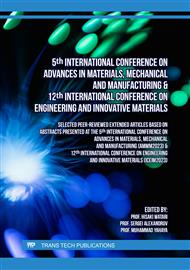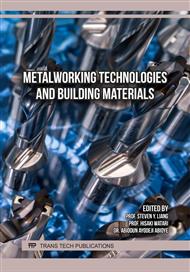p.15
p.27
p.35
p.43
p.51
p.59
p.71
p.77
p.85
High Efficiency Milling of Inconel 625 Alloy (Effect of Cutting Condition on Tool Life)
Abstract:
Inconel 625 alloy consisting of Ni and Cr and others has advantageous properties such as heat resistance and corrosion resistance, which make it a suitable material for application in aerospace, energy, and marine industries. However, it is also a difficult-to-machine material because of factors such as work hardening, low thermal conductivity, and high tool affinity. Therefore, the problems of the tool wear, chipping, and adhesion often occur in milling of Inconel 625 alloy using end mills. In this study, the milling of Inconel 625 was conducted using coated cemented carbide end mills, and the cutting conditions with the high efficiency were investigated under three rotational speeds and four feed rates. The results showed that increasing the feed rate increased the surface roughness, but did not increase the tool life. In addition, the results also showed that increasing the rotational speed did not increase the tool life, but reduced the surface roughness. As a result, the effects of the rotational speeds and feed rates on the tool life were clarified.
Info:
Periodical:
Pages:
51-58
Citation:
Online since:
March 2024
Authors:
Keywords:
Price:
Сopyright:
© 2024 Trans Tech Publications Ltd. All Rights Reserved
Share:
Citation:



